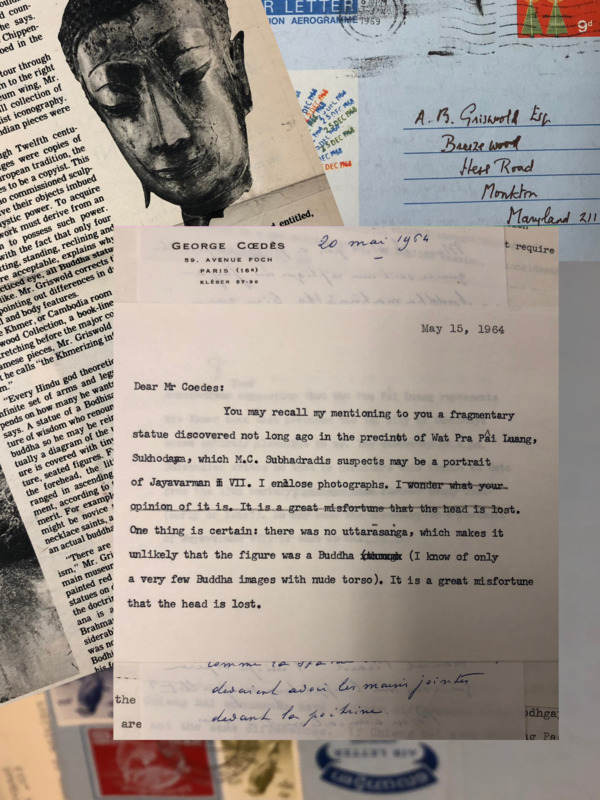Provenance
Griswold kept index cards for each piece in his collection; the oldest cards date to 1948. The cards identified the objects and their sizes, and some provided the date and place of purchase. While this information could not yet be located for the pieces Griswold donated to the Johnson Museum, Woodward includes these details in the catalogue of Griswold’s works held by the Walters Art Museum in Baltimore, Sacred Sculpture of Thailand. Examples from the catalogue help to give a sense of where items held by the Johnson could have been acquired: multiple sculptures were “acquired from Luang Ban,” with Luang being the title used for ordained monks (1997:166). Others were “acquired Lopburi,” or “acquired from a shop in Nakhon Kasem, Bangkok” (1997:137), or “private collection, Kamphaeng Phet,” (1997:135). Nakhon Kasem is an area between Yaowarat Road and Charoen Krung Road in Bangkok’s Chinatown; it may take its name from Siam’s first cinema, and it has been known as a shopping destination since the reign of King Chulalongkorn (Rama V, r. 1868-1910), home to family businesses that have been passed down over generations. Until recently, shops in this area offered an eclectic mix of items, from machinery to musical instruments, and a few antique shops sold carvings and furniture, but in 2014, tenants of 440 units in the area were forced to relocate when their leases expired and the neighborhood was slated for commercial redevelopment. Nakhon Kasem is popularly known in tourism promotional materials as “Thieves Market,” due to the belief that stolen goods used to be available for sale here.
Woodward, Hiram W. The Sacred Sculpture of Thailand: the Alexander B. Griswold Collection, the Walters Art Gallery. Baltimore, Md.: Walters Art Gallery, 1997.
Next:
